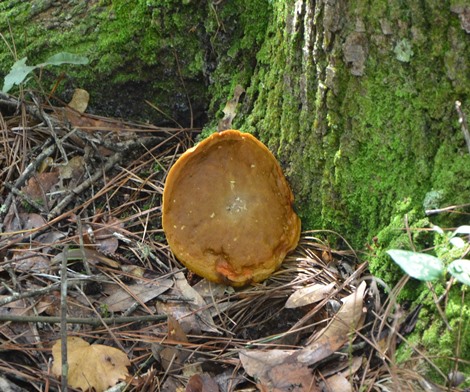
Mushrooms growing on the roots of trees is a bad sign. This indicates the roots are decaying and the tree will soon become (or already is) unsafe.
On the doorstep of autumn, the weather is making its seasonal change in north Florida. It has been a bit cooler in the mornings, but the afternoons still qualify as hot.
What the winds of October will blow in is still anyone’s guess, but last year it was Hurricane Michael. Unfortunately, the storm’s brunt came in causing severe damage to homes, businesses and marine enterprises in several counties.
October is typically the month when tropical cyclone activity lessens in the Atlantic, but accelerates in the Gulf of Mexico. While beastly events like Hurricane Michael are relatively rare, it only takes one such incident to necessitate recovery efforts and expenses for years, if not decades.
The prudent course of action is to prepare for the worst while hoping for the best. One area of preparation where residents can have a distinctly positive effect is readying their trees for the potential assault.
Damage from falling trees and limbs is a major cause of destruction during tropical storms and hurricanes. Removing potential problems before the storm can minimize harm to structures and injury to residents.
Trees in decline are especially hazardous. Their compromised health makes them subject to uprooting and breakage with far less force than would effect a healthy tree.
There are several key indicators for tree health. Any single factor or a combination can mark a tree as unsafe.
Mushrooms growing on or very close to trees is a sign the tree is dying. The fungus is not the cause of decline, but only an indicator of the eventual fate.
Spores of the mushrooms are scattered by wind and water. Landing randomly, most arrive on a site devoid of necessary resources and never sprout.
Those lucky spores which land on decaying wood will likely sprout and take nourishment from the rotting plant material. Their roots accelerate the decomposition of the wood by consuming the available material and exposing more of the tree to colonization by mushrooms.
Sites on trees and plants infected with mushrooms typically are break points when pressure or stress is applied. If the mushrooms are located at the base of the tree, it is likely to be detached from its roots and topple over in heavy winds.
Another indicator of tree health is its crown, or the uppermost branches and leaves. Healthy trees and plants have full, green, and growing crowns.
When the crown turns brown and the leaves drop off, it is a good indicator the tree’s days are numbered. The causes may be disease, lightning, or mechanical interruption of the root system.
Lastly, bifurcation or trunk forking is a sign of a structurally weak tree. This condition may display itself when the tree emerges from the ground or at an elevated place on the mature tree trunk.
When the wind direction stresses the tree with enough force at its angle of vulnerability, a collapse results. Unfortunately, there is no simple way to tell how much wind is required to produce the failure.
Any tree with these problems should be evaluated by a certified arborist and removed when necessary. It may result in an expense now, but can save on expenses, inconvenience and aggravation if a storm randomly removes the tree in the future.
The question must be asked: Is it worth the gamble to wait on the winds of October?
To learn more about the tree health in north Florida, read the UF/IFAS publication HOW TREES GROW IN AN URBAN ENVIRONMENT.
- Get Your Trees Ready For The Winds of October - October 8, 2019
- Feeding Caterpillars Aren’t Always Cute - August 10, 2018
- Wild Azaleas - May 23, 2018
